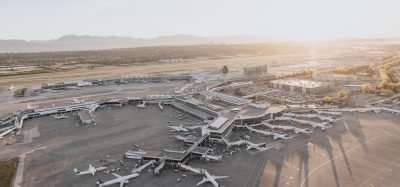Airports Council International and Moldova hold discussions over nation’s aviation future
- Like
- Digg
- Del
- Tumblr
- VKontakte
- Buffer
- Love This
- Odnoklassniki
- Meneame
- Blogger
- Amazon
- Yahoo Mail
- Gmail
- AOL
- Newsvine
- HackerNews
- Evernote
- MySpace
- Mail.ru
- Viadeo
- Line
- Comments
- Yummly
- SMS
- Viber
- Telegram
- Subscribe
- Skype
- Facebook Messenger
- Kakao
- LiveJournal
- Yammer
- Edgar
- Fintel
- Mix
- Instapaper
- Copy Link
Posted: 12 September 2024 | | No comments yet
The Director General for ACI Europe met with the Minister of Infrastructure and Regional Development of Moldova yesterday, to discuss the aviation issues the nation has, in helping achieve EU ascension.


Credit: ACI Europe
The Minister of Infrastructure and Regional Development of Moldova, Andrei Spinu, met with Olivier Jankovec, Director General of ACI EUROPE, Monday, 9 September to discuss the strategic relevance of aviation for Moldova. This discussion involved the delicate context that the region faces regarding the geopolitical reality of the Russian invasion of Ukraine in 2022, and the formal opening of EU accession negotiations last June. The nation is considered an emerging aviation market with significant potential for dynamic air traffic and growth.
What aviation problems do Moldova have?
With a propensity to fly (PTF)1 at just 0.57 compared to an EU average of 2.27, Moldova is considered an emerging aviation market with significant potential for dynamic air traffic and air connectivity growth. Every +10% increase in direct air connectivity automatically yields a +0.5% gain in GDP per capita.
The conflict between Russia and Ukraine, however, brought significant challenges for Chisinau International Airport (RMO), which had historically primarily relied on these markets. The demise of Air Moldova last year only added to these challenges. Yet, the airport has managed to diversify its route network, attracting new airlines and expanding traffic from incumbent ones.
While this has resulted in RMO’s passenger traffic currently exceeding its pre-pandemic levels by 26.6%2, this has also led to increasing congestion and suboptimal quality in terms of passenger experience. This was especially the case over the peak summer months of July and August, which saw passenger volumes increasing by close to 50% over last year. Such growth and future prospects point to the need for airport infrastructure upgrades and capacity developments with a focus on long-term planning, along with the reconsideration of the legal status and governance of the airport.
How can Moldova overcome any aviation problems?
Mr Jankovec states that: “There is no doubt Chisinau International Airport has gone through a lot of changes and that its role in supporting Moldova’s economy has never been more important. As traffic keeps increasing and the country is getting ever closer to the EU, now is the time to plan for the airport’s longer-term development. This should come with a reconsideration of its status as a state enterprise. Such status comes with many strings and is usually not conducive to the commercial flexibility and management agility needed for airports to further develop in a much changed and ever more competitive post-Covid aviation market.”
Referring to the way Europe’s airports have evolved over the past 30 years from being mere infrastructure providers to fully fledged businesses, Jankovec underlined how Moldova aviation can learn from the corporatisation of airports under public ownership and the involvement of private operators, notably with the concession model, has been instrumental in enabling this transformation. This in turn has ensured the sound development of airport infrastructure across the continent, with operational efficiency, improved passenger experience and a focus on both sustainability and connectivity.
“Moving towards either corporatisation under public ownership or the involvement of private operators with the required expertise is definitely what Moldova should look at for Chisinau International Airport. This is especially relevant considering the need for the country to follow EU aviation policies and implement related Regulations, as this will imply a systemic transformation of its aviation sector,” Mr Jankovec concluded.
1Number of air trips per capita.
2January-July 2024 vs. the same period in 2019.
Related topics
Accessibility, Airport crisis management, Airport development, Economy, Funding and finance

















